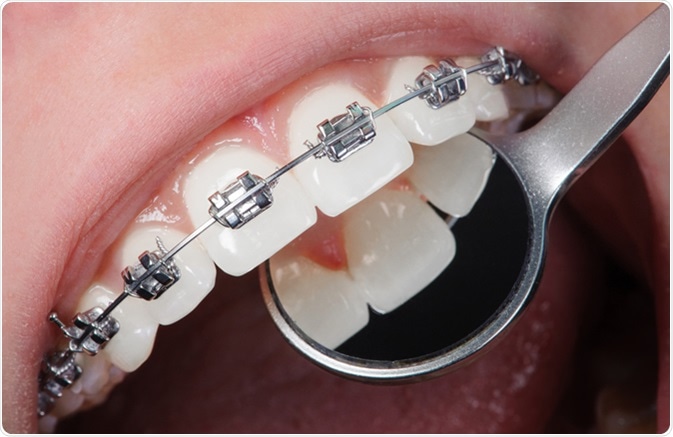For All The Latest Medical News, Health News, Research News, COVID-19 News, Dengue News, Glaucoma News, Diabetes News, Herb News, Phytochemical News, Cardiology News, Epigenetic News, Cancer News, Doctor News, Hospital News
(105).jpg) Applying dental braces is generally considered to be a safe procedure but there are some risks associated with their use, which are discussed in more detail below.
Applying dental braces is generally considered to be a safe procedure but there are some risks associated with their use, which are discussed in more detail below.
Over the short-term, dental braces can interfere with the way that patients masticate food. In particular, the small spaces around the teeth created by the braces provide a place for food particles to become trapped and thus lead to a deposit of plaque and bacteria.
This can cause damage to the enamel surface of the teeth, causing discoloration of the teeth or the appearance of white marks known as decalcification. Additionally, it may also lead to tooth decay and gum disease in some cases.

It is relatively common for patients with braces to notice some sensitivity on the inner cheeks, lips and gums where they come into contact with the metal bracket and wires of the braces. This may cause soft tissue injuries in the area. It is possible to reduce pain and irritation in these areas while helping the sensitive spots to heal with proper care and treatment.
Rarely, patients may experience an allergic reaction to the materials used in the dental braces, such as the latex rubber in the elastics or the nickel of the metal braces.
If there is a known allergy, these materials can be avoided; however, if the patient experiences a reaction after the braces have been placed, the braces (or elastics) may need to be removed and replaced with a more appropriate material for the patient.
As the teeth move through the dental braces treatment procedure, some of the bone in the path of the way the tooth moves dissolves and is replaced with new bone. This can, however, this can result in a permanent loss of length of the root of the tooth, which can reduce the stability of the tooth over the long-term.
Some patients may experience a loss of correction of the teeth positioning after the braces have been removed. This is most common for patients who do not closely follow the orthodontist’s instructions for the aftercare of dental braces, particularly wearing the retainer device that helps to maintain the position of the teeth.
There are several things that patients can do to help reduce the risks associated with dental braces.
Good oral care while the dental braces are placed is essential. Patients should be advised to brush their teeth after every meal with a soft-bristled toothbrush and fluoride toothbrush whenever possible.
It is also important to rinse the mouth thoroughly to make sure that any pieces of food that may be lodged in the braces are removed.
Many patients find it useful to check their teeth are clean with a mirror. Flossing with a floss threader is also recommended to clean between the braces and under the dental wires.
Diet can also play a considerable role in reducing the risks of dental braces. It can help to reduce the intake of sugary and starchy foods, as these can contribute to the formation of plaque and, consequently, tooth decay. Sticky and hard foods that can adhere to or break the braces should also be avoided.
Finally, regular checkups with the orthodontist help to make sure that the teeth and gums remain healthy and allow timely interventions to be made when necessary.